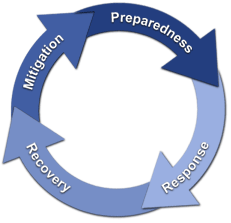
An effective emergency preparedness and response curtails a lot of preparation and in-depth assessment. When preparing for an unconventional emergency medical response such as biological/chemical attacks the following should be taken into consideration: the strength of the toxins, today’s highly mobile society, long incubation periods of certain biologic organisms and diseases that can result in an epidemic that can rapidly and silently spread across the entire community and possibly the rest of the country.
Recognizing the need for emergency preparedness and response
There must me a recognized need for a community to have an effective and feasible emergency preparedness and response plan of action. For example, health care personnel charged with the care in disaster situations must have a broad awareness in assessing a formerly healthy person with a rapid onset of flu-like symptoms must take into account in preparing to initiate the standing protocol for ominous illnesses such as severe acute respiratory syndrome or anthrax symptoms in order to contain the situation and prevent its spread to the community in general.
General considerations of emergency preparedness response in a non conventional disaster
Health care personnel should have a heightened awareness of the ever changing trends that may suggest deliberate dispersal of toxic or infectious agents. Some general principles should be considered such as the following:
- Being aware of unusual increase in the number of people seeking relief from similar progressive symptoms such as fever, respiratory or gastrointestinal symptoms.
- Taking note of clusters of patients presenting with the same unusual illness from a single location (majority of incoming patients coming from a common community affair such as a sporting or entertainment event.
- Being vigilant and suspicious of a large number of rapidly fatal cases especially when death occurs within 48-72 hours after hospital admission.
- 4. Taking note of any increase in incidence of diseases in a supposed normal healthy population. Such cases should be reported to the state health department and other local agencies concerned.
Rationale behind emergency preparedness and response
Should any of the trends become very evident, an extensive patient history should be taken into account to identify the possible biologic/chemical agent involved. A comprehensive assessment should include occupational, work and environmental factors. An exposure history should contain, at a minimum should contain information about past exposures to possible hazards. An environmental assessment should include history including previous home locations, water supply and any other similar environmental variables. In addition, admission history should include such information as recent travel and contact with people who have been ill. This specific and special type of history taking is very vital in order to be able to identify a possible exposure agent so that an effective emergency preparedness and response action can be initiated.
